Abandoned Places & Ghost Towns in the Adirondacks
An entire town deserted overnight. An opulent summer Great Camp abandoned after a century of use. See and visit these unique places for a look into times gone by.
From downtown Lake Placid to remote valleys nestled between summits of High Peaks, the Adirondack Region is dotted with abandoned places. We've traversed the Park for unique buildings and places that were once crown jewels in their communities, but have been left behind by changing patterns in travel and culture.
In our increasingly modern and technology-driven world, there is a resurgence of interest in the old, the vintage, and the abandoned artifacts of a time gone by.
We've also uncovered abandoned and occupied locales that are reportedly haunted in our Top 5 Haunted Places in the Adirondacks. So grab your hiking boots, pick up your camera, and explore these abandoned places in the Adirondacks.
The story begins back in 1826, the year Archibald McIntyre and David Henderson discovered iron ore in the Adirondack Mountains between Mount Marcy and the Santanoni Range. For the next three decades, Adirondack Iron Works continued to extract iron from the ground near the town of Newcomb, but the remote location of the operation ultimately caused the site to cease iron mining operations in 1857.
For nearly a century, the deserted mine lands were not used for much more than hunting and hiking. In 1941, a second period of mining activity commenced. This time it was titanium dioxide, not iron ore, that was taken from the mountains. Operating until 1989, National Lead Industries removed 40 million tons of the mineral before deserting the area, leaving nature to take its course.
The entire community of Tahawus (also known as Adirondac), abandoned their village in 1989 when titanium mining operations terminated. The lands are now open for hiking and recreational use to the public and are managed by the Adirondack Park Agency. In 2003, then-Governor of New York State, George Pataki opened public access to the Tahawus tract.
Among the recreational opportunities available, we recommend birding on the Tahawus Road to Upper Works and hiking the abandoned Tahawus Mines, also known as the town of Adirondac.
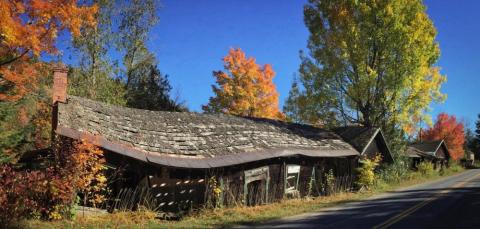
Camp Santanoni was built in 1893, as the summer estate of Albany banker and businessman Robert Pruyn. It is one of the first multi-structure vacation residences to be known as an Adirondack Great Camp. Its buildings are clustered across the estate in three groups: the Gatehouse Complex, the Farm Complex, and the Main Camp.
After generations of enjoyment, the heirs of the Pruyn holdings sold the camp to the Melvin family of Syracuse. The Melvin family enjoyed summer usage of the property while performing extensive maintenance to the site's many buildings. They continued to use Camp Santanoni until the 1970s when a member of the family disappeared into the surrounding woods, prompting the Melvins to invite hundreds of volunteers to comb the property. Sadly the lost person was never found.
As a result of the tragic memories associated with Camp Santanoni, the Melvins abandoned the property and sold it to the Nature Conservancy. After removing all furnishings from the buildings, the Nature Conservancy resold the land parcel and its buildings to New York State. Camp Santanoni was incorporated into the state Forest Preserve lands, never to be owned by a private entity.
In the 2000s, significant restoration efforts made Camp Santanoni once again ready to receive visitors. This time, her doors were opened to the public in summer and winter. Camp Santanoni Preserve is a destination for the curious historian and adventurous outdoorsman alike, offering year-round hiking and first-class cross-country skiing and snowshoeing in winter.
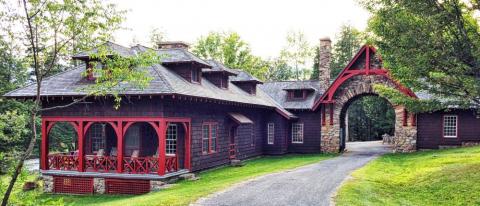
The Lake Placid Club was founded as a summer social club in 1895. Over their first decades of its existence, the club's activities expanded to winter leisure sports. Its founder was Dr. Melville Dewey, the same man who devised the Dewey Decimal Classification System employed in libraries across the world today. He had a habit of shortening words, and examples of this are spread across the Adirondack Region, including Loj (short for Lodge), after-glo, and even his own name, that was shortened to Melvil Dui.
The Lake Placid Club flourished throughout the opening decades of the 20th century. Fresh air and modern amenities drew well-to-do families to the Club's lakeside accommodations, golf courses, and winter sports venues. By the 1930s, the winter programs were so well developed that Lake Placid was able to host the international Winter Olympics. From these humble beginnings in winter recreation, Lake Placid developed into a snow sports mecca known throughout the world for its Olympic-class facilities and athletes.
The advent of air travel led to a change in vacationing habits among wealthy families, and the sharp decline in Lake Placid Club membership in the 1970s resulted in the hotel's closing at the end of the decade. Former Club-owned golf courses are now operated by the Lake Placid Crowne Plaza. The site of the Club's ski hill on Mount Whitney is deserted and has been overtaken by the forest, while the main hotel site has burned down and been removed except for a low stone wall that can still be seen on a walk around Mirror Lake Drive in Downtown Lake Placid.
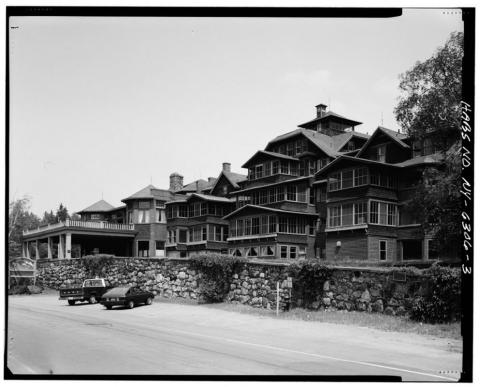
Once a Wild West themed amusement park known as Frontier Town, vacant buildings now occupy the abandoned land just off the Adirondack Northway's Exit 29. It attracted families by the thousands from 1952 until it closed in 1998. The property is now a deserted ghost town of oddly shaped buildings that were once rides and attractions for vacationers.
In 2017, New York Governor Andrew Cuomo announced a $32 million project to create a "Gateway to the Adirondacks" on the former site of Frontier Town. The project is anchored by a tourism hub with an event center and equestrian camping area.
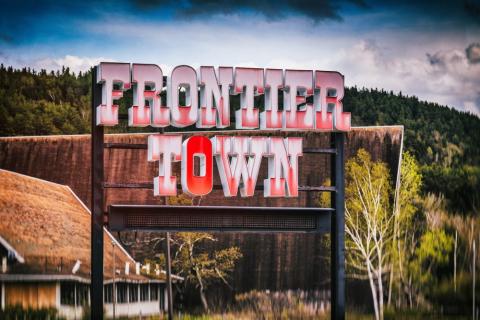
In the 1950s, Russia and the United States were engaged in a fierce nuclear arms race. The US Air Force chose Plattsburgh as a base to command 12 of the 72 Atlas missile sites places across the nation. Seven of these missile silos were built in the Adirondacks and served the country until being inactivated in 1965.
The Adirondack Atlas F missile silos have been abandoned ever since, with a few notable exceptions.
Big Slide Brewery based in Lake Placid, decided to age beer inside one abandoned missile silo for eight months. The aptly named To Russia, with love, is a Russian Imperial Stout that was stored 25 feet underground where cool temperatures are "an ideal place to age the dark, robust brew," according to the brewer in an Adirondack Daily Enterprise interview.
One enterprising couple operates a farm on the site of a former missile silo in Sugarbush. They even incorporated the Atlas F Mission into their farm name – Atlas Hoofed It Farm. The farmers say "our name ties together the missile silo and the (hoofed) animals which are housed around the silo."
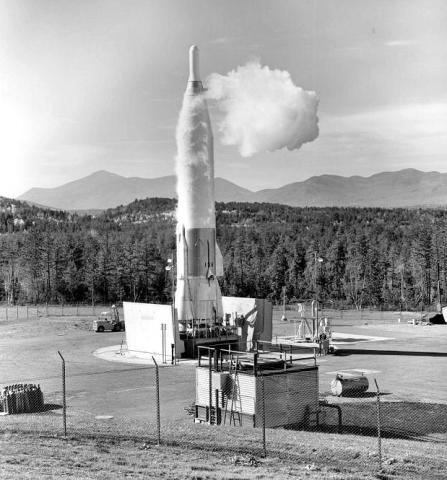
Please note: It is your responsibility to acquire appropriate permissions before investigating any location listed on this site. Private property should be respected at all times, as should all posted signs concerning trespassing, hours of operation and other local regulations.